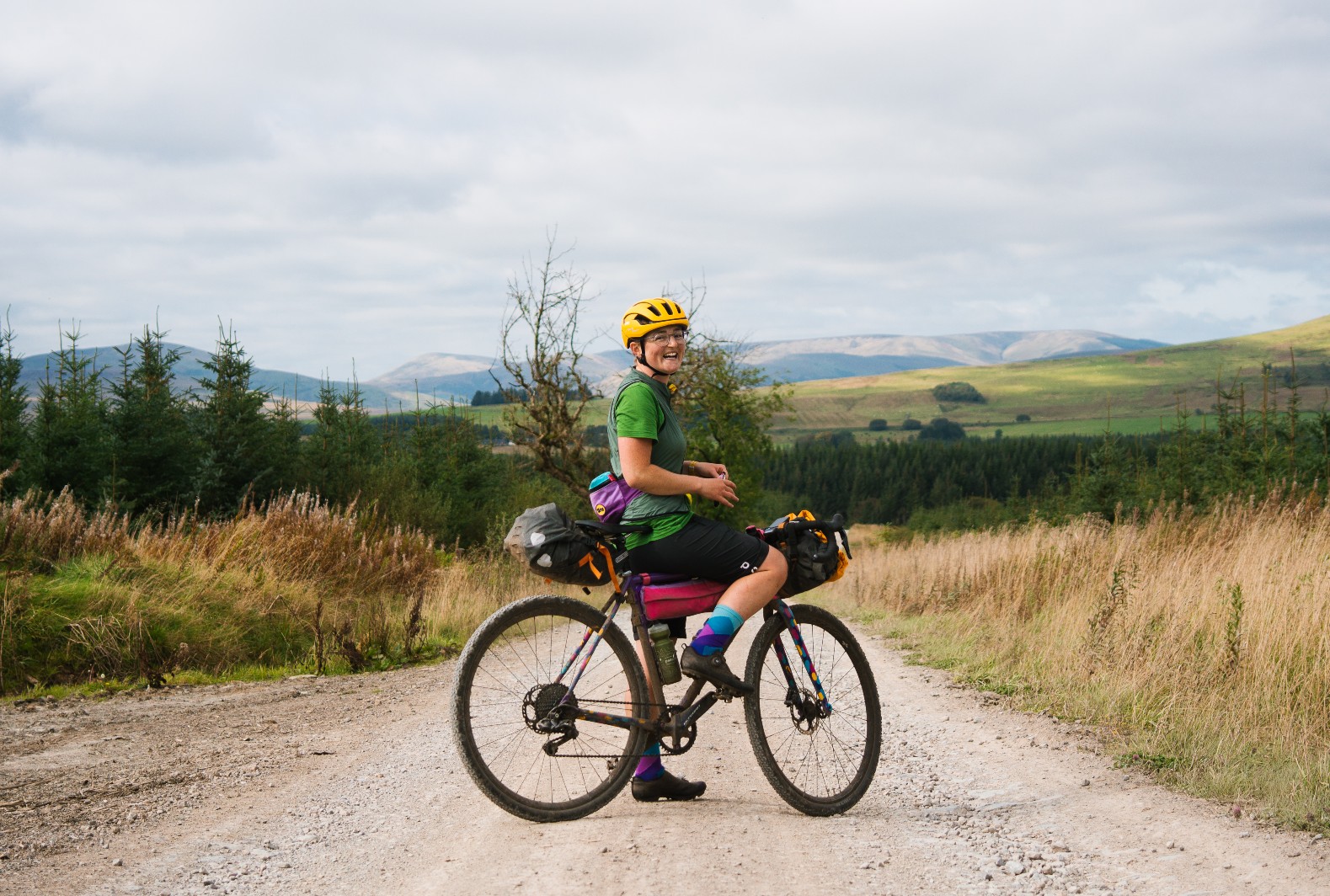The Brompton P Line folding bike combines the British brand’s trademark practicality with low weight and a turn of speed, but it comes at a premium over the company’s more affordable models.
Brompton simplified its folding bike range in 2021 and introduced the P Line (Performance Line) as a replacement for the Brompton Superlight.
The P Line (available from £2,244) places a focus on low weight, with a frame that combines steel and titanium to shave more than a kilogram off Brompton’s A Line (from £850) and C Line (from £1,250) models.
The brand also recently released the full-titanium Brompton T Line, which is the only bike to weigh in at less than the P Line, although you’ll pay £3,950 for the 4-speed, 7.95kg Urban model.
Brompton P Line details
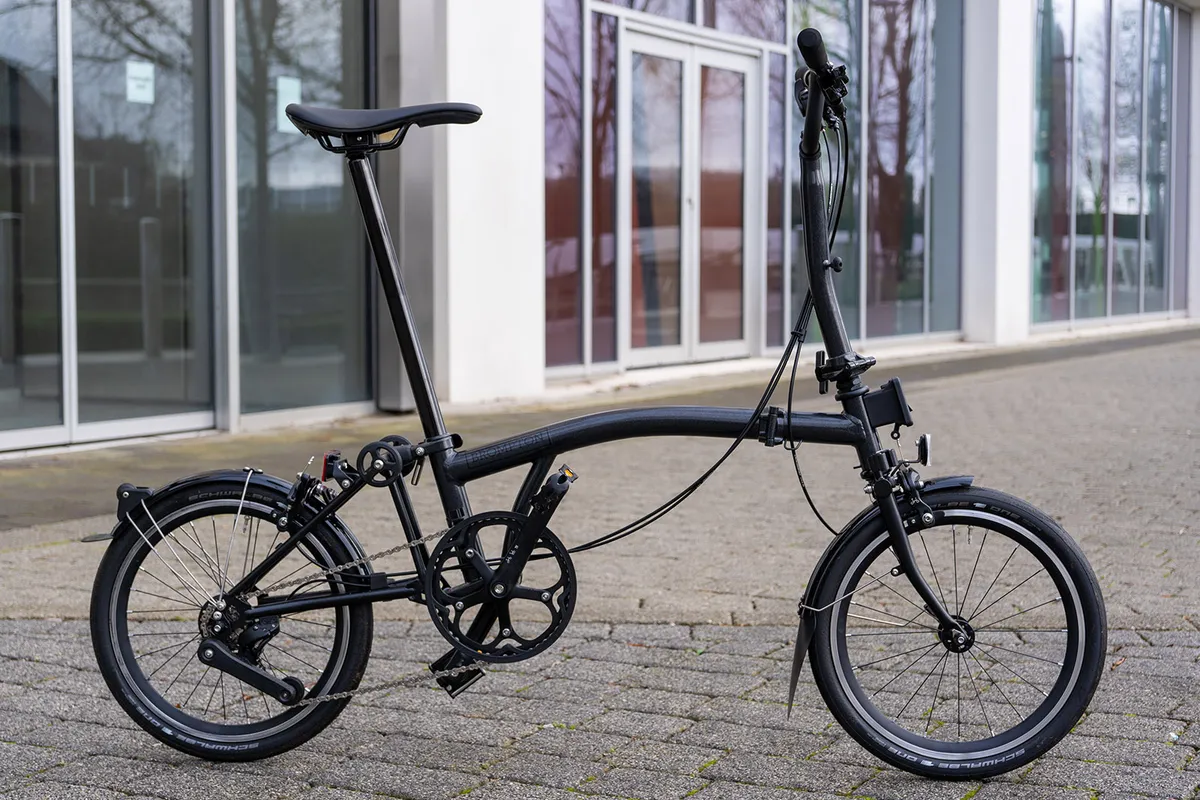
Weighing in at 9.65kg for the base model, or just 10kg for our test bike complete with front carrier block, Brompton has focused on reducing the weight of the P Line, without compromising on durability for everyday city use.
Titanium has been used for the fork and rear frame, in place of steel on Brompton’s ‘Classic’ model, the C Line, to save 700g. That’s paired with steel tubing for the main frame.
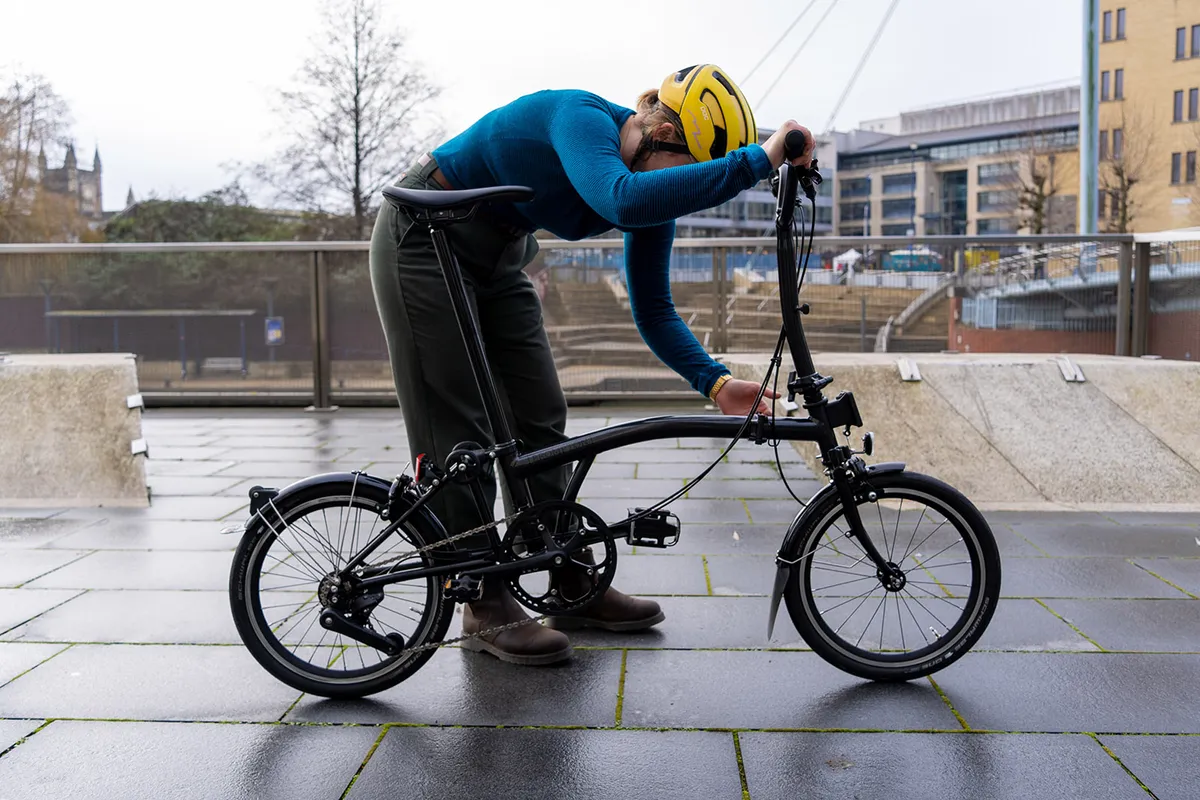
Brompton has also used a redesigned, lightweight 4-speed compact gearing system, with a revised rear-hub design, which forms part of Brompton’s lightest wheelset, while the suspension has been updated to improve handling and pedalling efficiency, according to Brompton.
When it comes to transporting the bike (rather than it transporting you), you have two options: you can fully fold the P Line, with the rubber underside of the saddle acting as a handle, or leave the seatpost in its position, which allows you to wheel the folded bike like a trolley, on larger and lighter wheels than its predecessor.
The P Line is available in Midnight Black or this sparkly Storm Grey colourway.
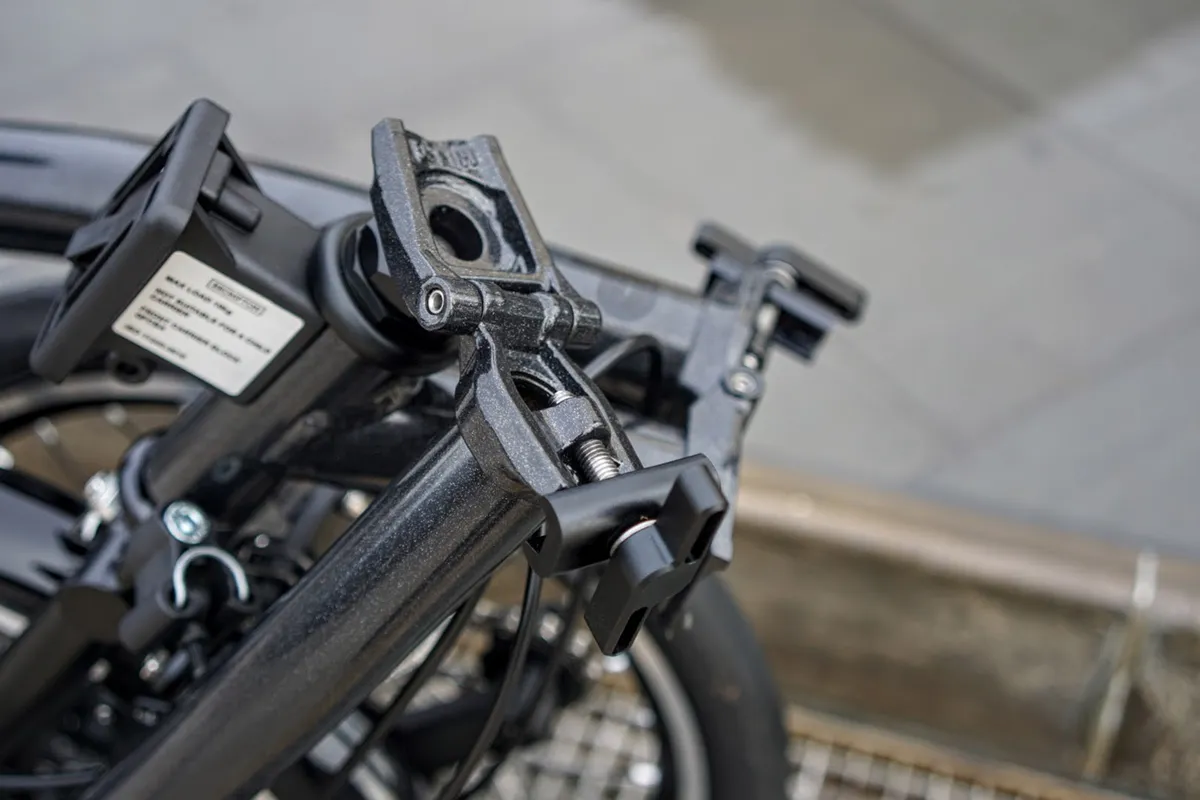
Brompton P Line sizing
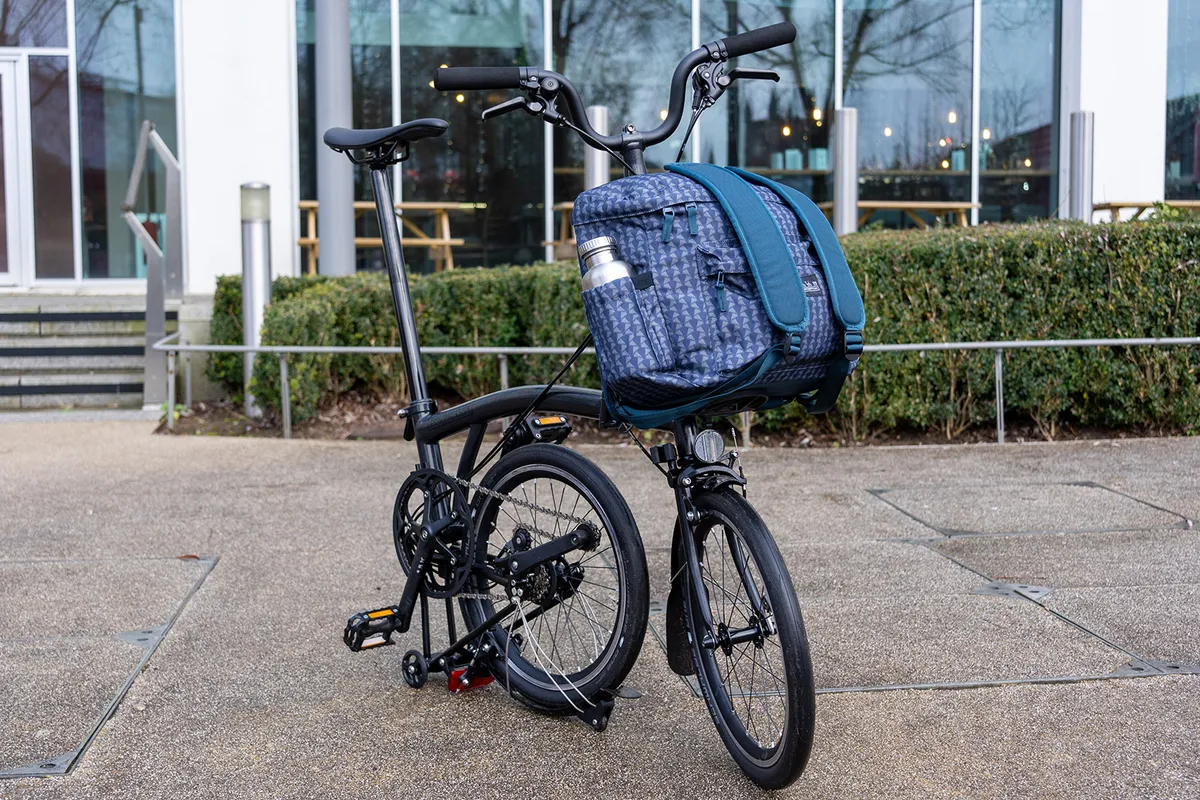
The Brompton P Line is built around a one-size-fits-all frame, and you can adapt the seatpost and handlebars to suit. I tested the standard seatpost and M-type bars, which worked well for my 5ft 4in height.
For taller riders, there are the H-type bars, which share the same shape as the M-type, but at a greater height. There are also the lower, flat S-type bars, which give a more aggressive cycling position.
The standard seatpost supplied is suitable for riders with an inside leg measurement of up to 84cm, or you can choose the extended option for inside leg measurements up to 89cm.
Brompton P Line specifications
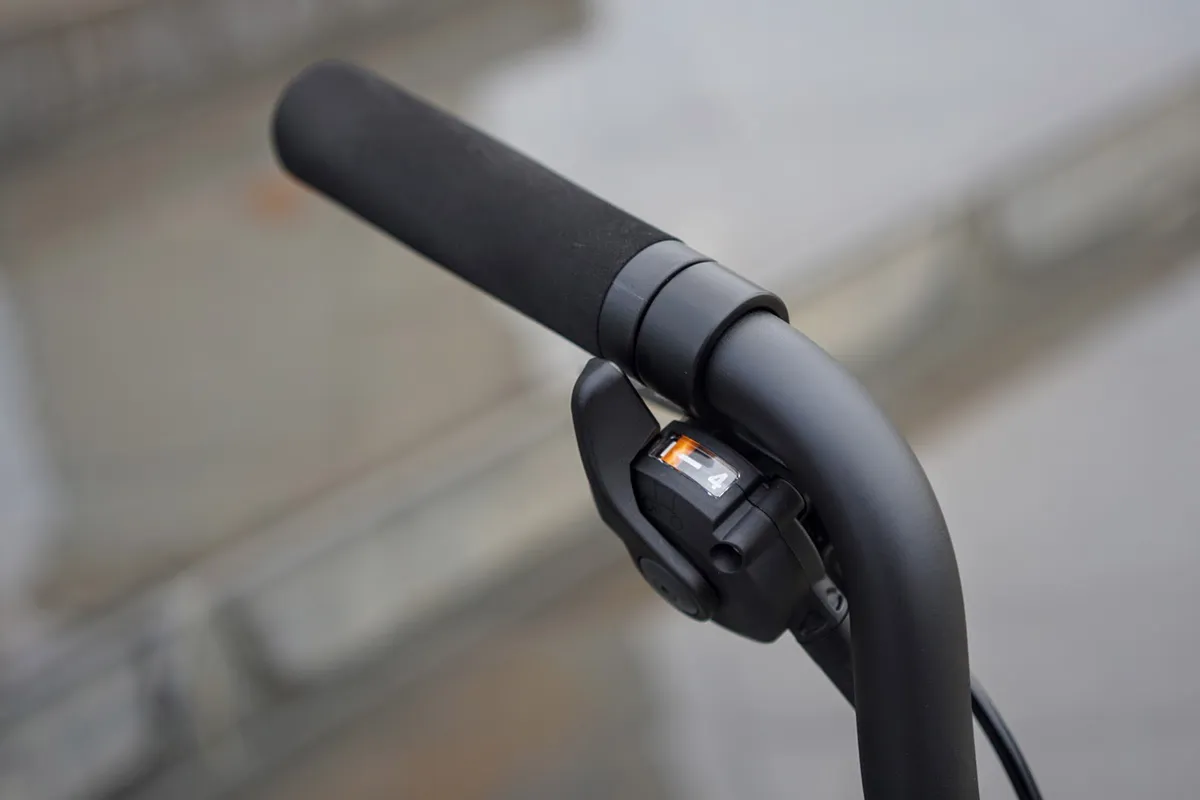
As you might expect from such a specialist bike, the P Line is built predominantly from parts designed in-house by Brompton.
The new 4-speed drivetrain uses a cassette and a lightweight 60g plastic derailleur, unlike other Brompton models, which use hub gears.
The brakes are Brompton’s own rim brakes, using dual-pivot calipers.
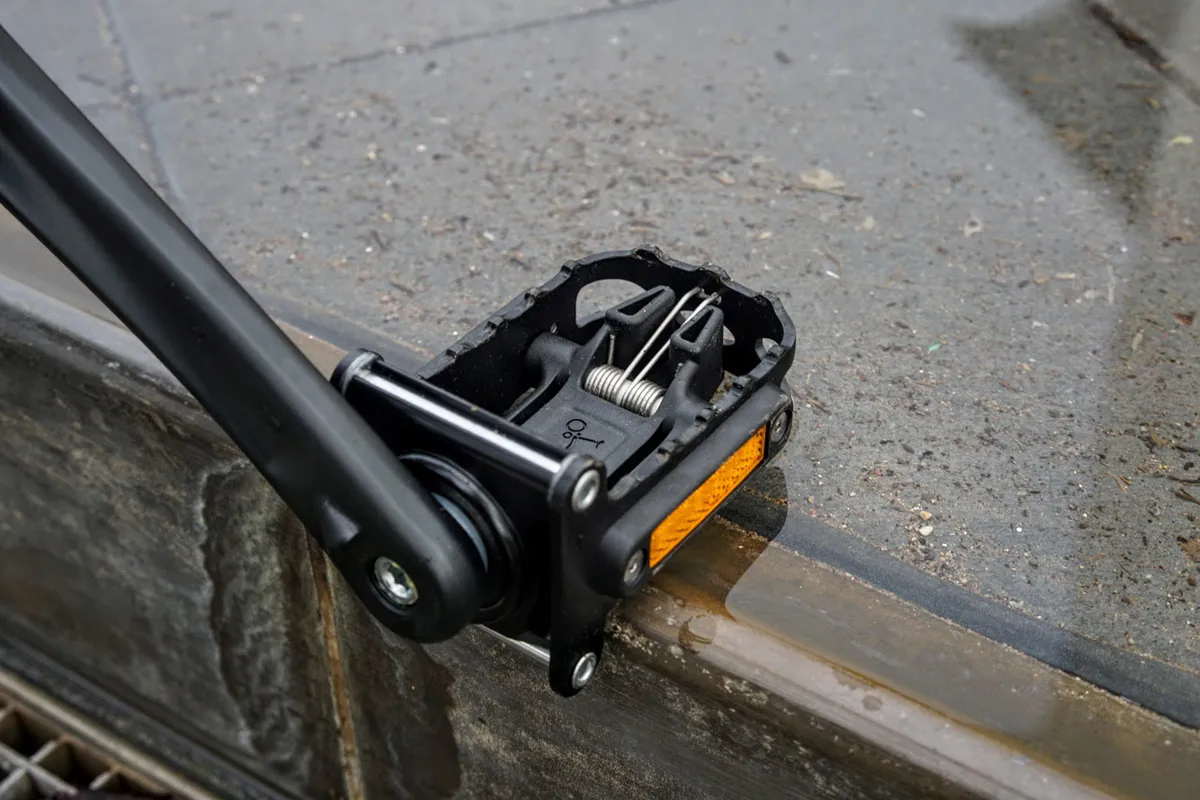
Puncture-resistant, 16in Schwalbe One tyres in a 35mm width (measuring 33mm) are fitted with Tubolito’s lightweight S-Tubo tubes, which weigh in at 34g each.
The lightweight approach doesn’t come at the cost of practicality, though, and the build still features full mudguards.
Brompton P Line ride impressions
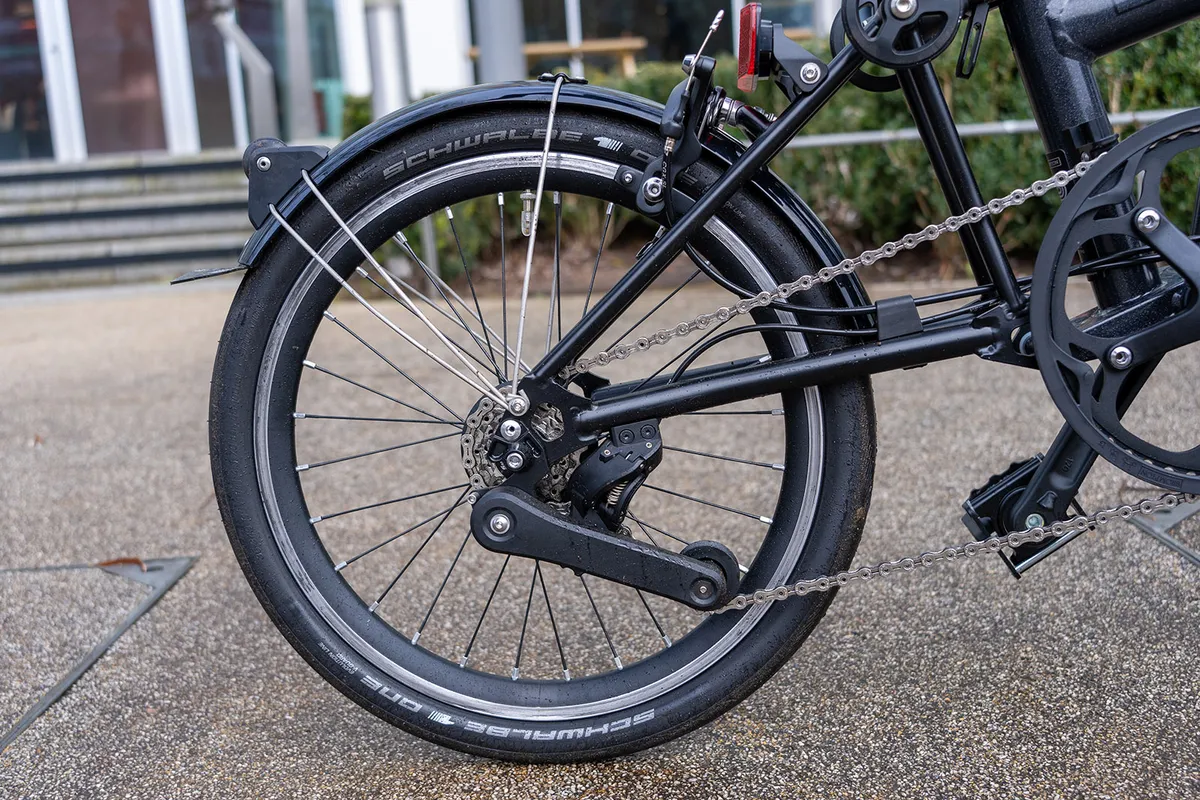
Designed with city travel in mind, I’ve been riding the Brompton P Line on the streets, cycle paths and cobbles of Bristol, in the southwest of England, stashed away in my hallway at home, and carried or wheeled into numerous shops and cafes.
The limited assembly required from the box was very straightforward, with detailed instructions and a number of helpful videos online from Brompton.
Out on the road, there’s initially some disconnect between how tiny the 16in wheels are, how upright the position is, and how fast you can ride the bike.
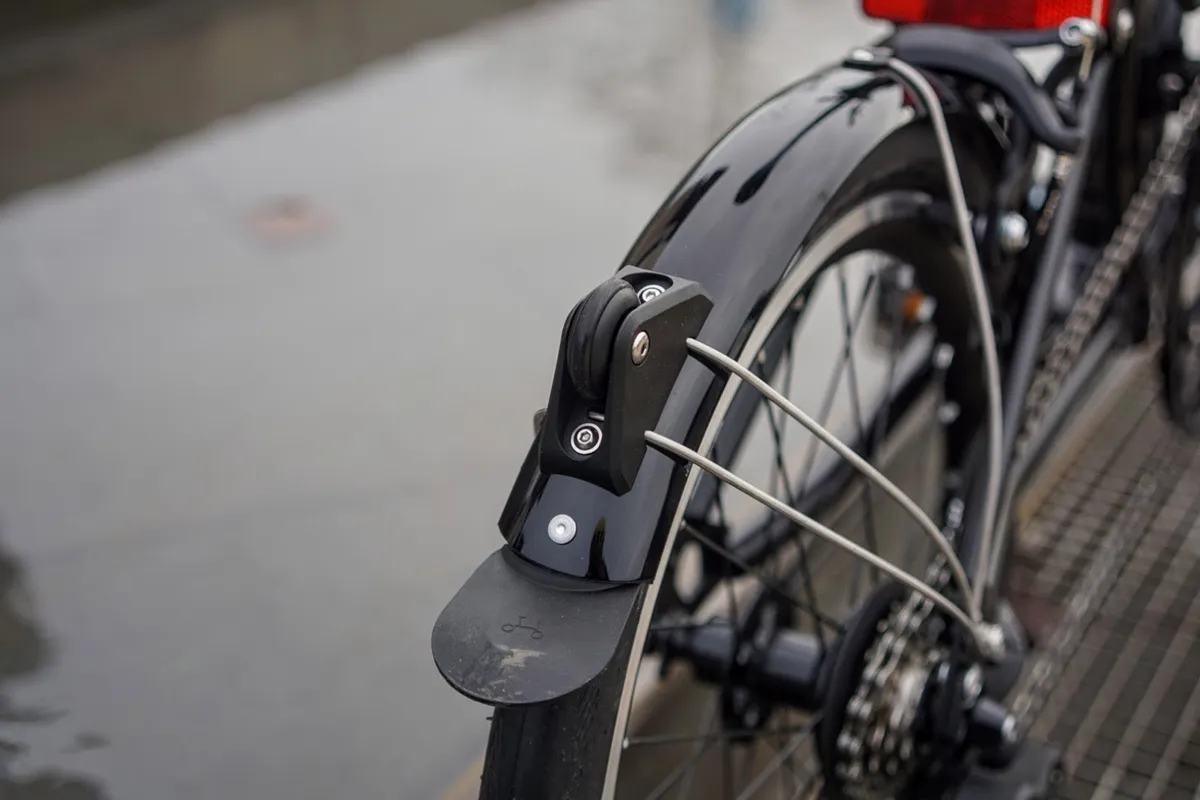
It takes some getting used to, if you’re not accustomed to riding a Brompton, but look ahead up the road and you’ll be zipping along at quite some pace, dodging nimbly around obstacles and street furniture, or safely squeezing through gaps.
I couldn’t help but let the grin stretch across my face.
Superior practicality
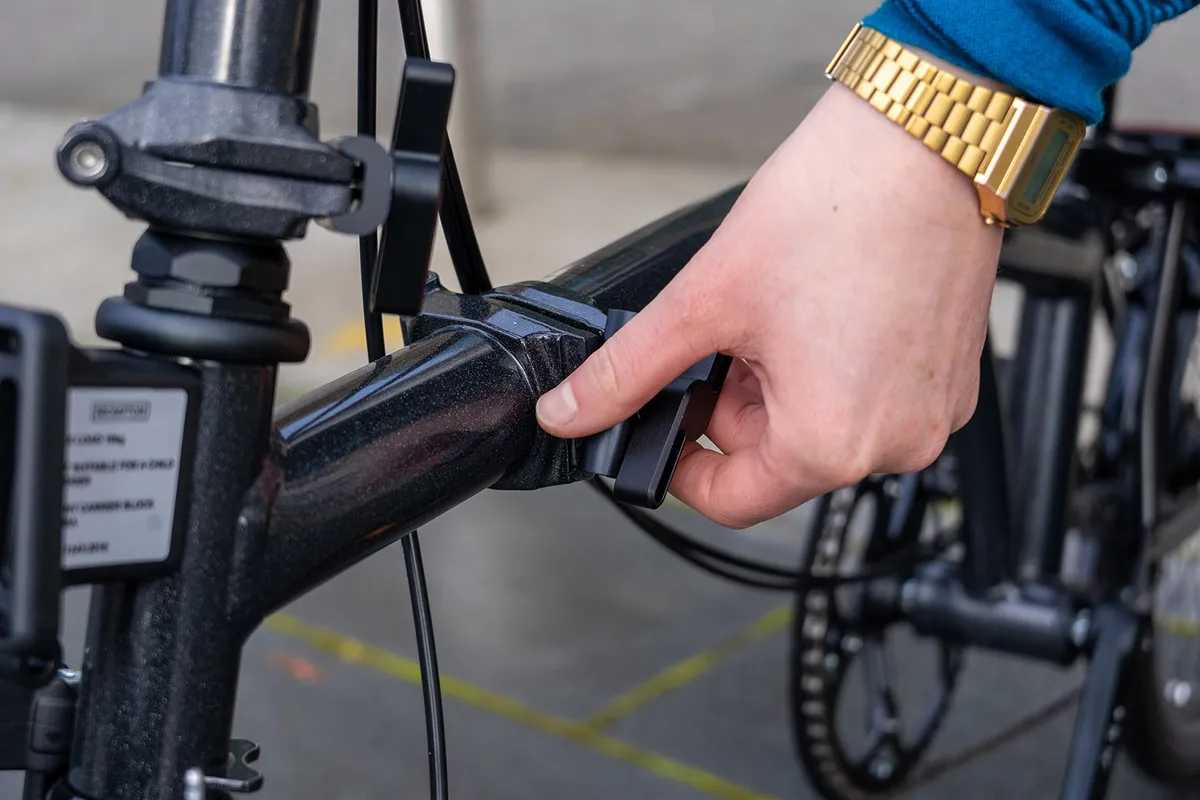
There’s no doubt the Brompton P Line is an incredibly practical bike to ride in the city.
Full mudguards mean you arrive at your destination with a dry bum and clean shoes (not to be underrated) and in a matter of seconds you can collapse the bike to carry or wheel with you into a shop, cafe or workplace.
In fact, it took me less time to fold the bike away than it did for my partner to find a suitable space and lock his.
Also, there’s no more anxiety about leaving your bike locked up outside and peering through the window every 20 seconds to check if it’s been nicked yet.
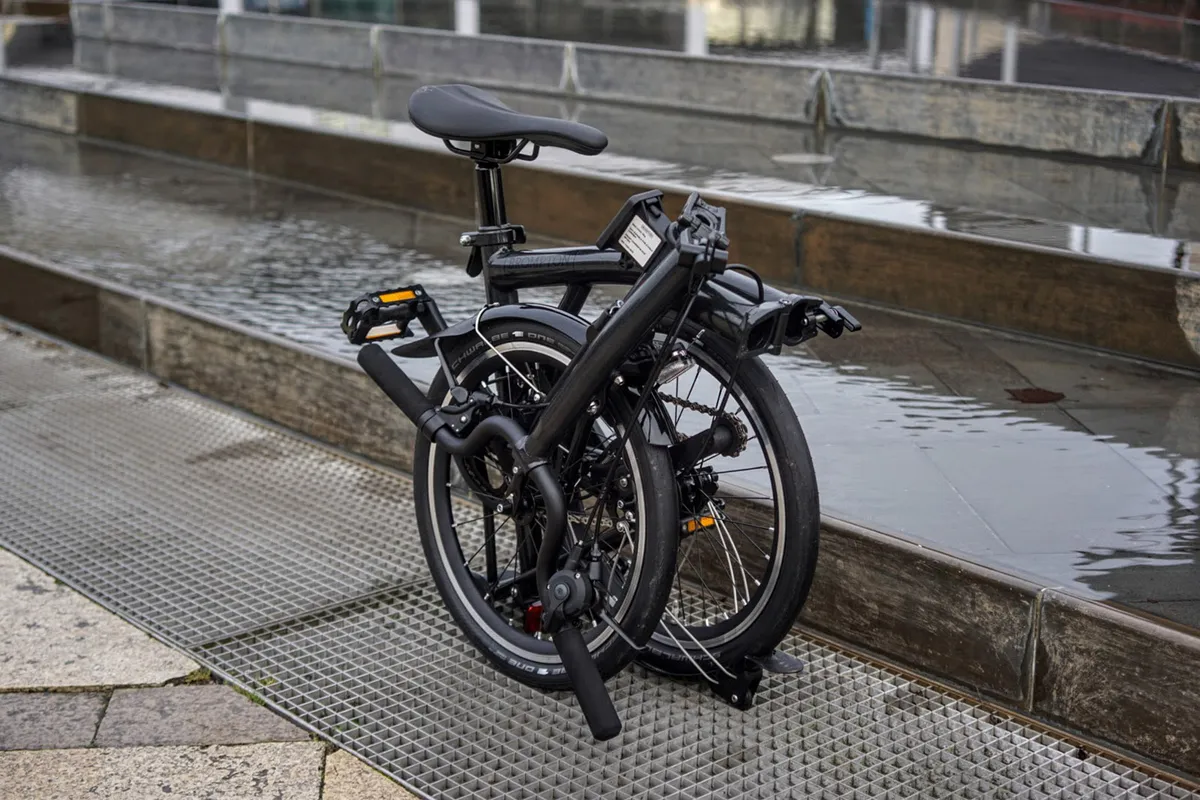
Not got a great deal of space in your flat? A folding bike can help you there, too.
The idea of being able to take your bike straight onto a train carriage without having to book in advance, jostle with other cyclists, or haggle with the guard seems like a dream. Not to mention being able to combine cycling and bus travel.
It will come as no great surprise, given the popularity of Bromptons and the ethos behind the company’s bikes, but the design is ideally suited to combining various forms of transport in one journey.
Brompton P Line upgrades

So far, so Brompton, but what about the premium P Line upgrades?
Does the lightweight build justify the additional upcharge over the A Line and C Line models?
Weight savings are key to the P Line concept, which I found most useful when it comes to carrying the folded bike.
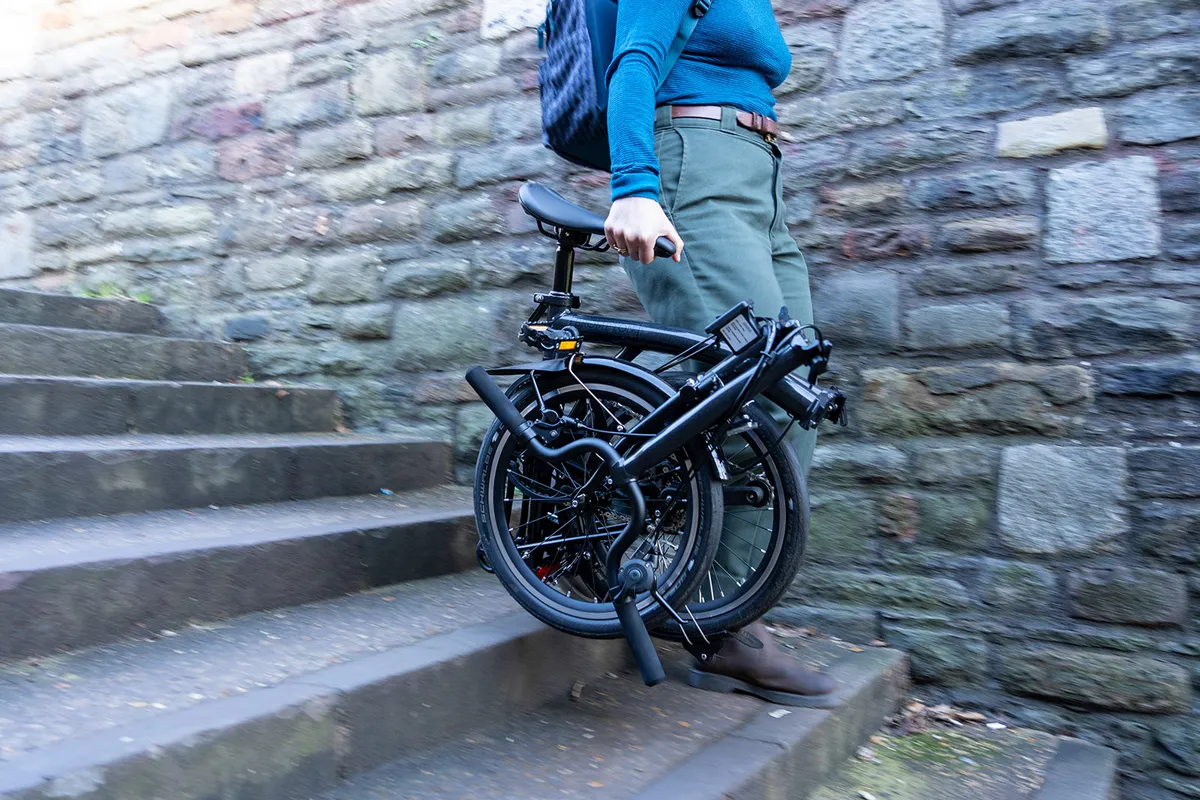
That does come at a significant cost, though, for a 1.4kg saving over the mid-range C Line model and 1.64kg reduction over the most affordable A Line bike (according to Brompton’s claimed weights).
However, given the nature of a Brompton, and how often some riders will carry and transport the bike, those weight savings shouldn’t be overlooked if you’re someone who will make good use of the bike’s folding capacity.
On the ride, the weight reduction is less important: let’s face it, this won’t have an impact if most of your riding is on relatively flat gradients. And the weight-saving diminishes if you’ll have a front bag loaded up with your laptop or groceries anyway.If you do live in a hilly area – and Bristol, where I did my testing, is hilly – there will be some benefit from the lighter weight.
When it comes to climbing, the 4-speed gearing also offers some help, though for the steeper, longer hills of Bristol I’d opt for the 6-speed C Line Explore instead.
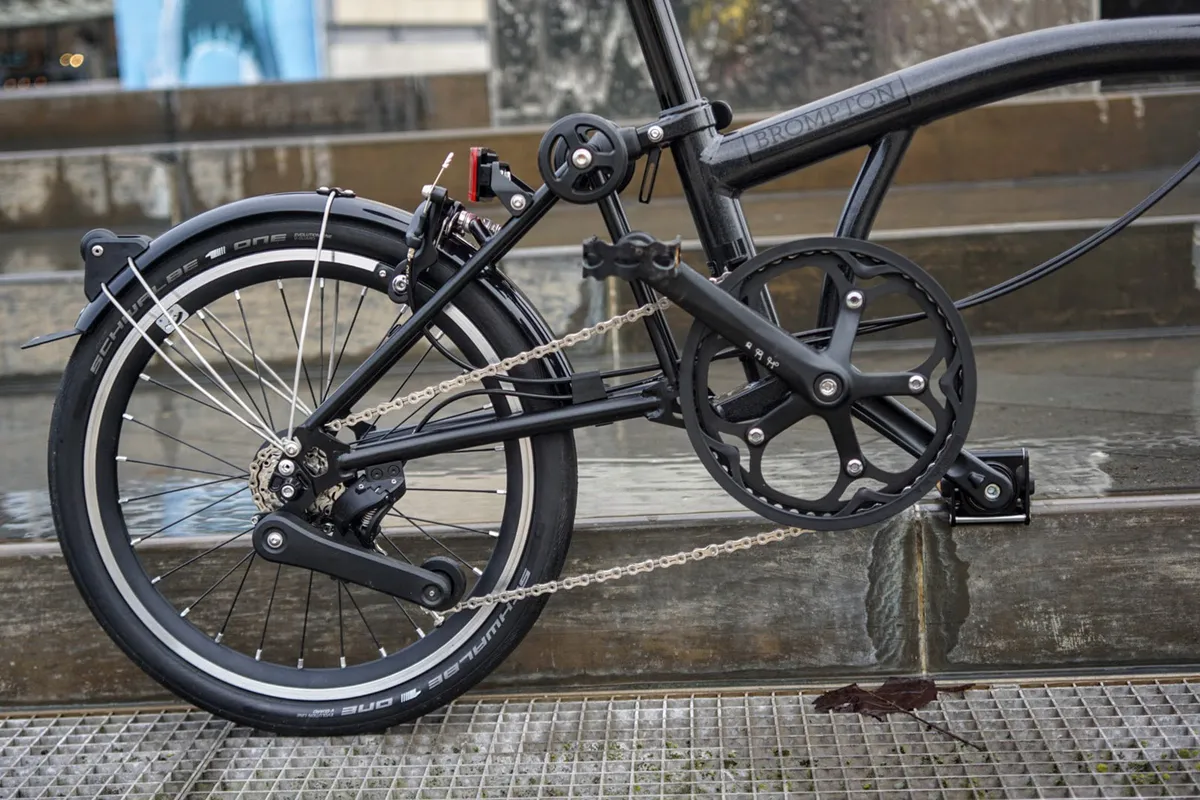
If climbing performance was really that high on my priority list, I’d probably leave the Brompton at home and take the road bike instead.
Ultimately, it’s about choosing the best bike for your urban adventures or ride to work.
A few tweaks
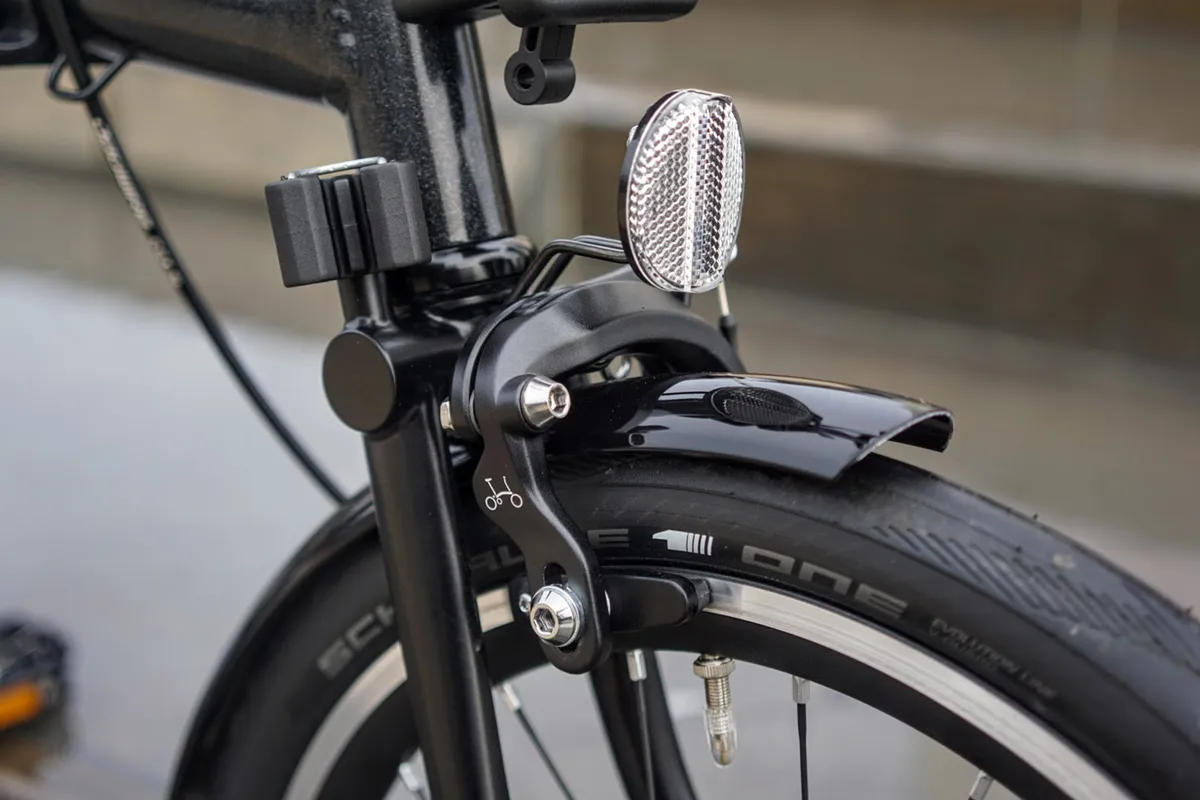
A few small changes could further improve the performance of the Brompton P Line.
Gearing was a little tricky: there was some gear skipping straight from the first ride and, despite much fettling with the cable tension, I wasn’t able to eliminate this completely.
I was very impressed with the braking performance (rim brakes really ain’t dead here), once I’d reduced the reach of the brake levers and tilted them forwards as much as I could without compromising the fold.
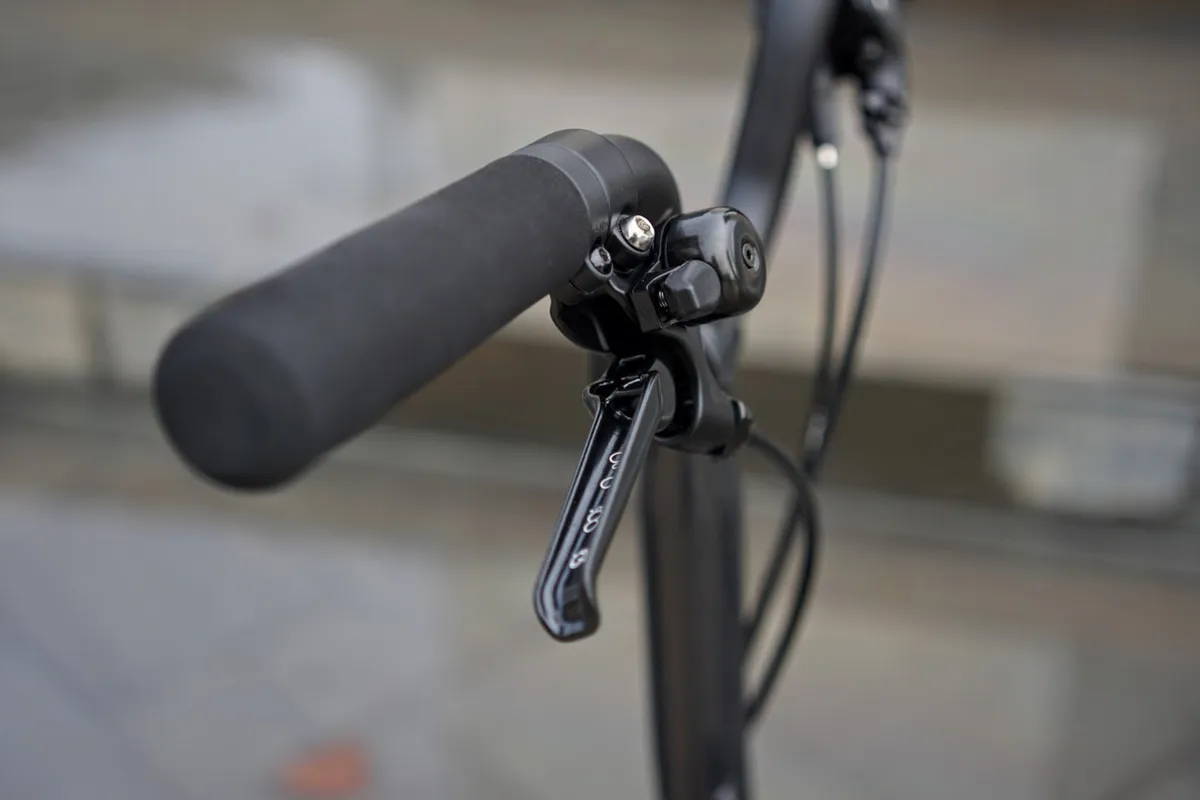
I’d also like to see a little more care taken in assembly and QC; one of the brake blocks wasn’t fully on the braking track.
Finally, the integrated bell is positioned well for easy reach, but in the hustle and bustle of the city it's just too quiet and polite for my liking.
With the ‘mid’-shape bars, there’s no logical place for an aftermarket option either, if you did want to upgrade to one of the best bike bells.
Brompton P Line bottom line
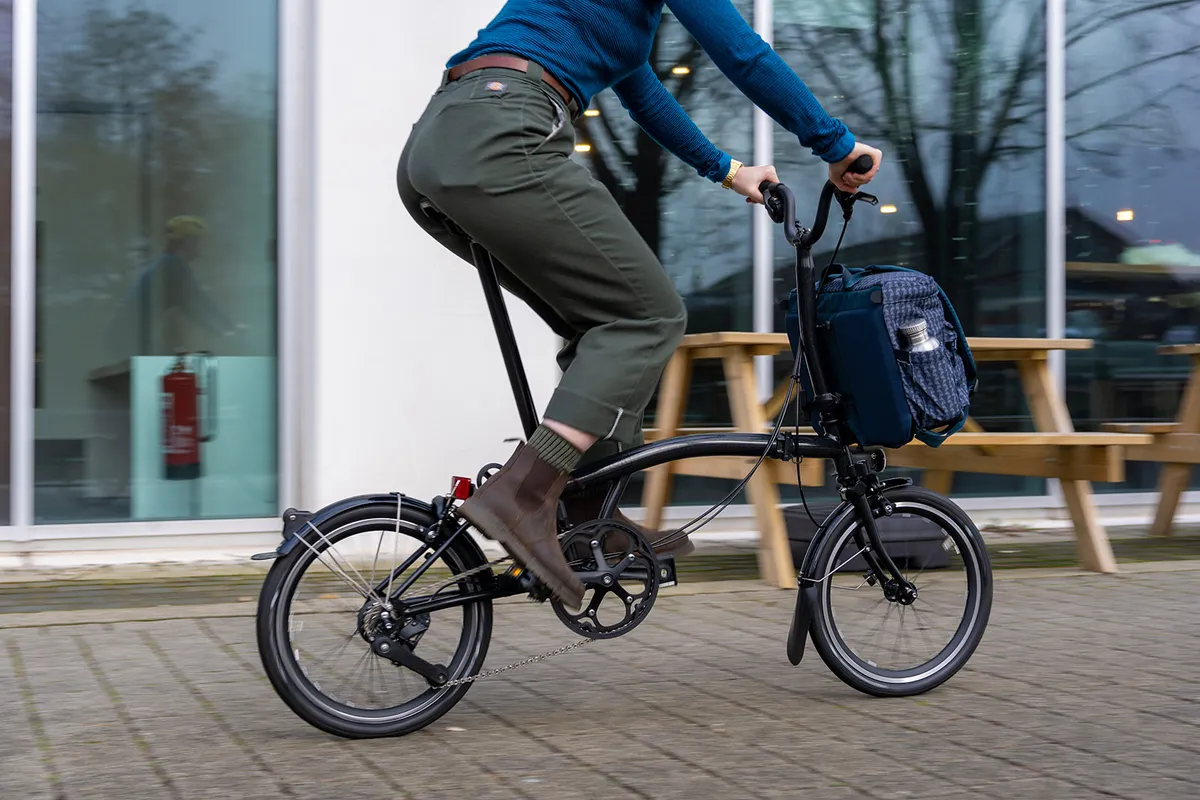
For a true city bike that will take you from work to the shops, on the bus and train, and home via the cafe, a folding bike is almost unrivalled in terms of practicality and the Brompton P Line combines that practicality with low weight and a fast, small-wheeled ride.
However, although the weight savings of the P Line come in handy for carrying and climbing, especially if your upper-body strength isn’t your strong point (like me), it does come at a significant cost over Brompton’s more affordable models.
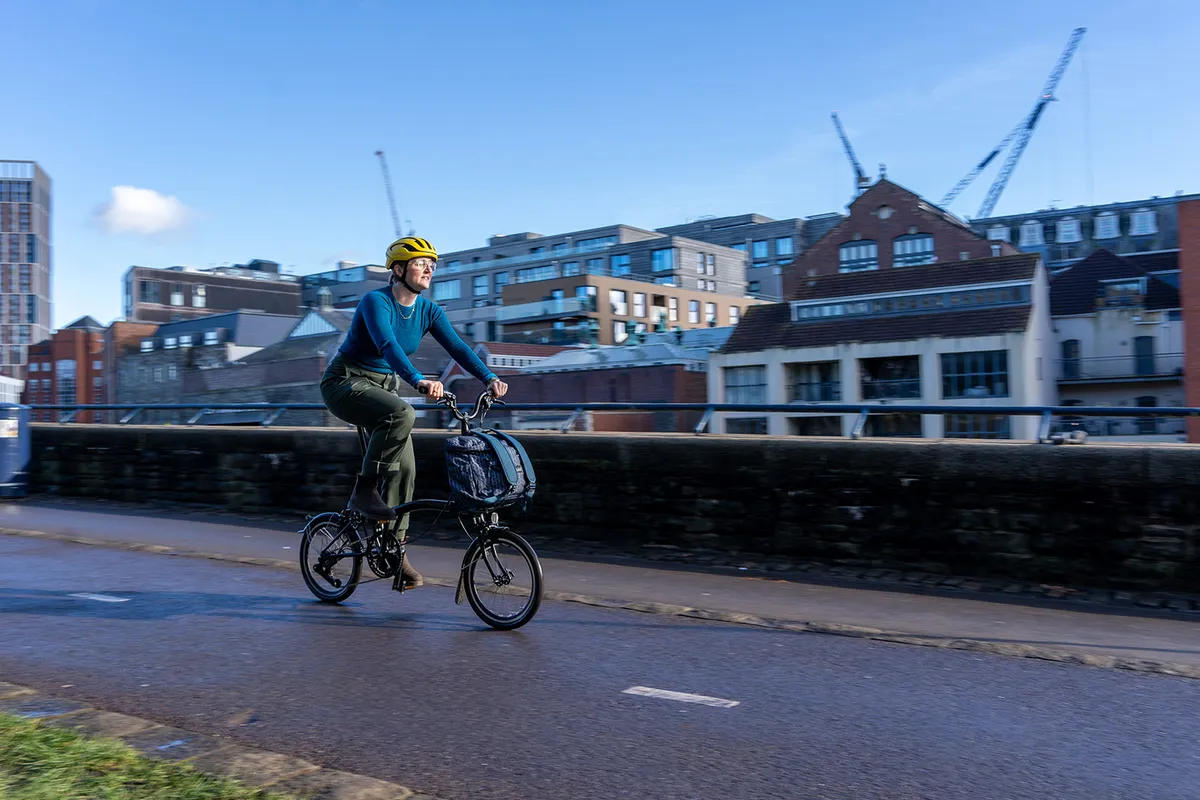
If those weight savings are important to you, the P Line offers the zippy ride and character we’ve come to expect from Brompton, in a lighter, carry-friendly package.
Otherwise, the brand’s cheaper options will leave money in the budget for lights, luggage and anything else you may need, with change to spare.
Product
| Brand | brompton |
| Price | 2550.00 EUR,2100.00 GBP,2750.00 USD |
| Weight | 10.0000, KILOGRAM (One size, with mid handlebars, and standard telescopic seatpost) - claimed 9.65kg without front carrier |
Features
| Fork | Titanium, threaded headset |
| br_chain | Hollow pin Superlight Advance chain |
| br_frame | Heat-treated steel main frame, hand and auto-brazed joints, titanium rear frame with replaceable hanger |
| Tyres | 349 x 35C Schwalbe One, Tubolito S-tubo 34g tube, presta |
| br_brakes | Bromtpon rim brakes, dual pivot calipers |
| br_cranks | 6061 forged aluminium crank with 50T chainring and chain guard |
| br_saddle | Brompton Superlight saddle with grip under nose |
| br_wheels | 16” Brompton Lightweight rims on sluminium hubs |
| br_headset | Brompton Superlight |
| br_shifter | 4-speed trigger shifter with display |
| br_cassette | 4-speed 11-18T |
| br_seatpost | Brompton chromoly steel tube,chrome plated seatpost in standard size |
| br_gripsTape | Superlight lock-on grips with precision ground foam adhered to ultrathin engineered core |
| br_handlebar | Brompton mid handlebars, triple butted (6061) aluminium handlebar with shot-peened finish |
| br_bottomBracket | Square taper |
| br_availableSizes | One size, with low, mid or high handlebars, and standard, extended or telescopic seatpost |
| br_rearDerailleur | Brompton direct mount 4-speed derailleur (Patent pending) |
| Features | Folded size: 645mm (H) x 585mm (W) x 270mm Mudguards: Curved profile with titanium stays and rubberised flap, roller wheel mounted Hinge clamps: Machined aluminium levers and plates with matte black finish Pedals: Brompton folding left-hand pedal and non-folding right-hand pedal Front carrier: Plastic front carrier block for all types of Brompton luggage |
